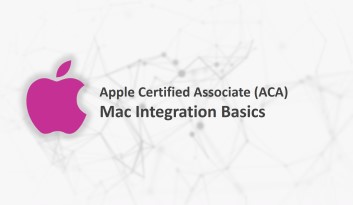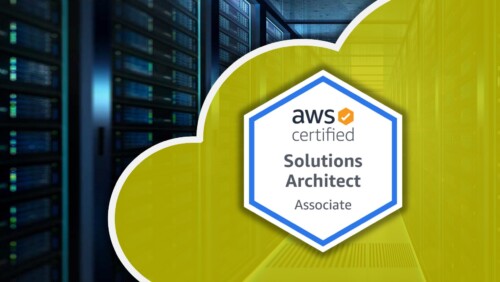Description
Overview
The CompTIA Linux+ Certification validates your foundational knowledge in all major distributions of Linux and is the gateway certification towards more advanced Linux certifications. It builds upon foundational knowledge and helps you further tighten your Linux operating system, installation, maintenance, security, troubleshooting and automation skills.
Linux is at the core of many operating systems used in computers, servers, in the cloud, Cyber Security, web administration applications, mobile and embedded devices. This certification is particularly valuable for existing IT professionals who wish to become Linux administrators.
With more and more enterprise organizations adopting Linux as the operating system of choice, the job prospects for individuals holding CompTIA Linux certifications are high. This certification brings weight to your resume and can put you ahead of others interviewing.
- 22:00:00 Hours
- 12 Months Access
- Presented by highly qualified, industry leading experts
Course Details
Objectives
- Hardware and system configuration
- Systems operation and maintenance
- Security measures and operations
- Linux troubleshooting and diagnostics
- Automation and scripting
Audience
- System and network engineers who wish to add Linux expertise to their skillset.
- Entry to mid-level IT professionals taking the first steps towards specialization in Linux.
- Junior Linux, systems, and network administrators, as well as Linux database and web administrators.
Prerequisites
- Before starting your journey to become CompTIA Linux+ certified, we recommend that you meet the following prerequisites:
Prior tostarting Linux+ exam preparation:
- CompTIA A+ and CompTIA Network+ certification.
Prior totaking the CompTIA Linux+ exam:
- Completion of our CompTIA Linux+ training program.
- At least 12 months of Linux adminhands-on experience in the lab or field.
- Thorough understanding of all topics detailed in the exam objectives.
Course Outline
The Linux+ certification covers a variety of topics designed to prepare you for your role as a Linux admin. Topics covered include systems operation and maintenance, hardware and system configuration, security, Linux troubleshooting and diagnostics, automation and scripting.
Hardware and System Configuration
- Explain Linux boot process concepts.
- Given a scenario, install, configure, and monitor kernel modules.
- Given a scenario, configure and verify network connection parameters.
- Given a scenario, manage storage in a Linux environment.
- Compare and contrast cloud and virtualization concepts and technologies.
- Given a scenario, configure localization options.
Systems Operation and Maintenance
- Given a scenario, conduct software installations, configurations, updates, and removals.
- Given a scenario, manage users and groups.
- Given a scenario, create, modify, and redirect files.
- Given a scenario, manage services.
- Summarize and explain server roles.
- Given a scenario, automate and schedule jobs.
- Explain the use and operation of Linux devices.
- Compare and contrast Linux graphical user interfaces.
Security
- Given a scenario, configure and implement appropriate access and authentication methods.
- Summarize security best practices in a Linux environment.
- Given a scenario, implement logging services.
- Given a scenario, implement and configure Linux firewalls.
- Given a scenario, backup, restore, and compress files.
Linux Troubleshooting and Diagnostics
- Given a scenario, analyze system properties and remediate accordingly.
- Given a scenario, analyze system processes in order to optimize performance.
- Given a scenario, analyze and troubleshoot user issues.
- Given a scenario, analyze and troubleshoot application and hardware issues.
Automation and Scripting
- Given a scenario, deploy and execute basic BASH scripts.
- Given a scenario, carry out version control using Git.
- Summarize orchestration processes and concepts.
Top of Form
PERFORMING BASIC LINUX TASKS
- Overview
- Introduction to Linux
- Linux Command Line
MANAGING USERS AND GROUPS
- Super User Privileges
- Managing Users
- Managing Groups
MANAGING PERMISSIONS AND OWNERSHIP
- Managing File Permissions
- Advanced Permissions
MANAGING STORAGE
- Partitioning Disks
- Linux File System
- Logical Volume Manager (LVM)
- Filesystem Hierarchy Standard (FHS)
MANAGING FILES AND DIRECTORIES
- Editing Files with vi
- Editing Files with vi Part 2
- Working with Files
- Locating Files
- Searching with grep
- Manipulating Text
MANAGING KERNEL MODULES
- Managing Kernal Modules
- Managing the Linux Boot Process
MANAGING SYSTEM COMPONENTS
- Graphical User Interfaces
- Managing Services with Systemd
- Managing Services with SysVinit
- Troubleshooting Services
- Troubleshooting Services Part 2
MANAGING DEVICES
- Configuring Hardware
- Supporting Printers
MANAGING NETWORKING
- Understanding TCPIP
- Configure Networking
- Troubleshooting Network Connections
MANAGING PACKAGES AND SOFTWARE
- Managing Software with Apt
- Managing Software with Yum/DNF
- Building from Source
SECURING LINUX SYSTEMS
- Linux Security Best Practices
- Linux Security Best Practices Part 2
- Securing Apps with SELinux
- Securing Apps with AppArmor
- Filtering Traffic with Firewalld
- Filtering Traffic with iptables
- Backup and Restore Data
WORKING WITH BASH SCRIPTS
- Configuring Bash
- Writing a Bash Script
AUTOMATING TASKS
- Scheduling Tasks
- Scheduling Tasks Part 2
- Version Control with Git
INSTALLING LINUX
- Installing CentOS
- Installing CentOS Part 2
- Installing Ubuntu



